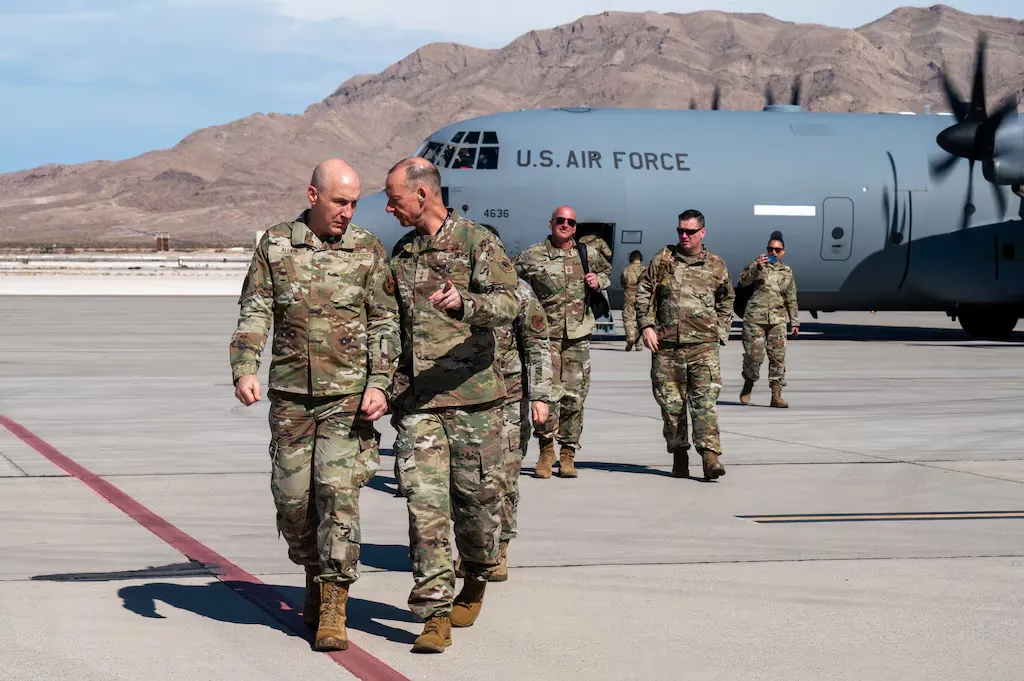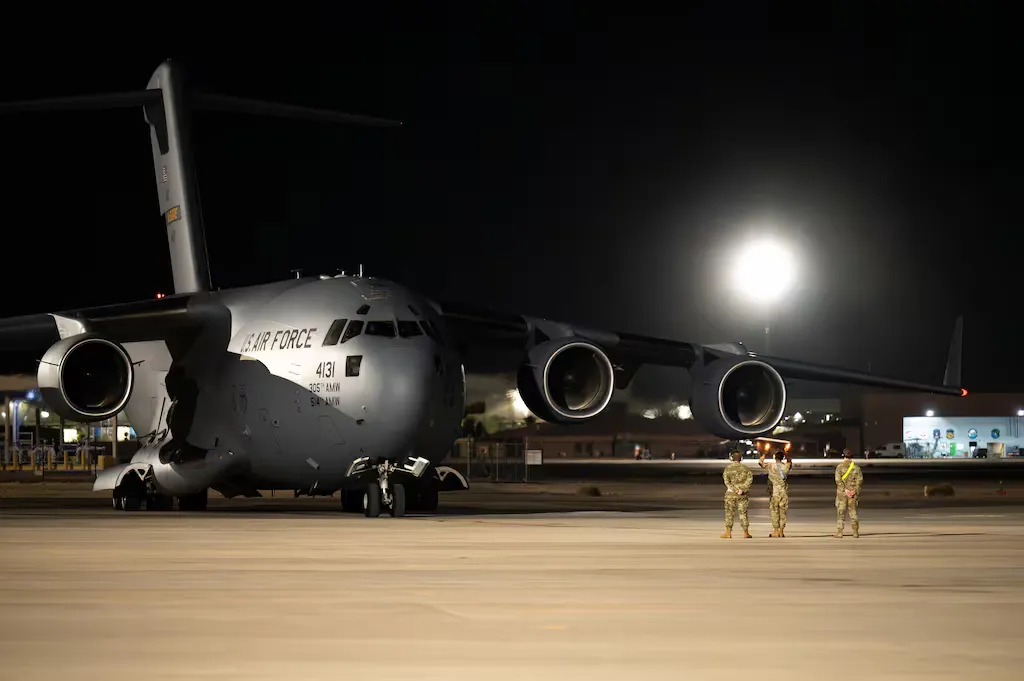The Air Force is making progress on preparing a network of dispersed bases and airfields across the Pacific in case of a war against China, the service’s top general said Wednesday, but must do more to defend those bases against attack.
“I would feel more confident if we had a more robust active base defense” to safeguard those smaller operating locations that would be used under a concept called Agile Combat Employment, Air Force Chief of Staff Gen. David Allvin said in a roundtable with reporters at the Pentagon. “If we’re going to need to operate from those [sites], having active defenses would certainly help against a threat of a large number of missile attacks.”
The Air Force fears that if a conflict breaks out in the Pacific, China could send barrages of missiles against the United States’ larger, more traditional regional air bases in Japan and Guam. Such attacks could seriously degrade or knock out the Air Force’s ability to launch aircraft in the Pacific.
To counter that, the Air Force has developed Agile Combat Employment, or ACE, which would spread out air operations to a variety of smaller operating locations in the region.
Some of those ACE locations could be local civilian airports, or austere bases set up in the field with rough air fields. And they would be run by smaller teams of “multi-capable airmen” trained to do several jobs — like fueling aircraft or providing security — instead of just one specialty.
Allvin said the service is succeeding at fine-tuning how ACE will work in the field, and training airmen how to conduct such operations.
He pointed to the Bamboo Eagle exercise that took place at multiple sites in the Pacific and Nellis Air Force Base in Nevada earlier this month. Under that exercise, expeditionary units trained on ways to operate in a simulated contested battlespace, and practiced getting in and out of smaller bases set up in a “hub and spoke” style under ACE.
Bamboo Eagle also gave commanders of participating wings — including the 9th Reconnaissance Wing from Beale Air Force Base in California and the 23rd Wing from Moody Air Force Base in Georgia — practice exercising command and control over units spread out to those multiple field bases, without the subordinate group structure the Air Force typically uses, Allvin said.
“It was really fascinating, and I think it gave me some more encouragement that we are on the right path,” Allvin said. “We have a long way to go, but we’re exercising, we’re developing facilities and infrastructure to be able to support larger-scale mission readiness, [and] we are putting our wings together to be able to command and control and align for this type of readiness.”

But while spreading bases out might make it harder for China to conduct massed missile strikes or other attacks, it would not eliminate such a threat. Allvin said the Air Force is working with the Army on ways to counter those attacks.
“They [the Army] are pursuing some things specifically with us to support Agile Combat Employment,” Allvin said.
Allvin declined to specify what countermeasures are in the works, but said he wanted capabilities that could defend against ballistic or cruise missiles.
Allvin acknowledged that, since ACE would entail large numbers of smaller bases, it may not be feasible for each base to have its own missile defense. So such defenses would need to be able to move around to where they are most needed at any given time, he said.
“If we can’t have them at every space, we want to be able to decide where to place them,” Allvin said. “Which means they need to be mobile [and] not to be fixed.”
He said he was less concerned about the threat from small, swarming drones, since they may not have the range to cross large swathes of the Pacific Ocean to reach their targets.
And tried-and-true strategies to confuse the enemy by planting fake targets in the field could still help defend ACE bases, Allvin said.
“The old-school things of camouflage, concealment and deception are still alive and well,” Allvin said. “We just need to upgrade them to a 21st century context. … They don’t know if that’s a real thing, or a fake thing. Should I spend a missile on it? Should I spend five missiles on it?”
As the Air Force makes those decoy plans, Allvin said, it needs to find the right balance between making them believable and making them affordable. The service could make a fake target so believable it’s essentially indistinguishable from the real thing, he said, but it might be so expensive it defeats the purpose of a decoy.
Passive defenses against cyber and electronic warfare attacks are also an important part of safeguarding ACE bases, Allvin said.
Dispersing operations through Agile Combat Employment also creates some command and control challenges the service needs to work through, Allvin said. In some cases during a conflict, an aircraft might have to land at a different base than it took off from.
“Knowing where that [alternate base] might be, having better access to the primary parts, to the munitions, to the fuel — all those sorts of things happen with a more robust command and control,” Allvin said.
Teaching airmen to be able to do multiple jobs on deployment will be a critical part of the ACE concept, Allvin said, and the service is adapting its training structures to do so. New recruits going through basic military training are already learning how to tackle multiple responsibilities, he said.
And for already-existing airmen, Allvin said, the Air Force is looking at fold training on multiple jobs into professional military education.
Allvin said that during his Bamboo Eagle observations, he saw airmen are already adapting to these new responsibilities.
“They are flat getting after it,” Allvin said of airmen working under the ACE concept. “They are quickly understanding the situation, they are innovating like nobody’s business. But I would like to be able to reduce the risk on them” by improving base defenses.






